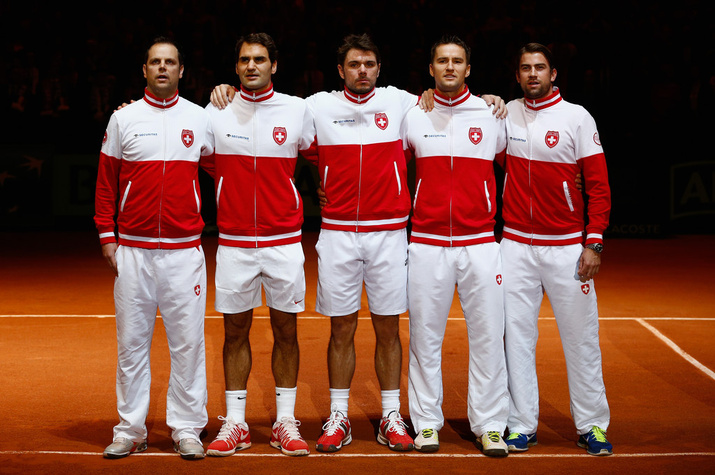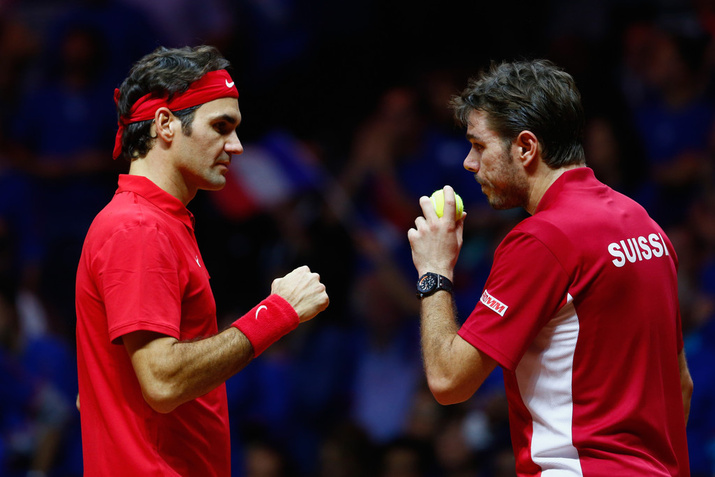Don't miss any stories → Follow Tennis View
FollowIlluminating the Pitfalls and Dilemmas of Davis Cup
The 2015 Davis Cup is just around the corner, and not surprisingly, there is a mixed bag as to the number of notable stars who will be competing. It is an unfortunate scenario that is not new to Davis Cup, and one that begs the question of whether a change in format is needed for this historic team competition.

While recent years have seen a slight uptick in terms of the top talent competing in Davis Cup, it remains plagued by less than ideal participation from the headlining stars. The International Tennis Federation (ITF) has tried to combat this situation by tying Olympic eligibility to Davis Cup (and Fed Cup) participation. Players must now be part of a final nominated Davis Cup team and be present at the tie on three occasions over the course of a four-year Olympic cycle, and one of those ties must come in the year prior to or of the Olympics in which the athlete hopes to compete. This recent requirement has led to grumbling from more than a few players.
To some degree, it is understandable why the players would take issue with essentially being forced to play the team competition. The game has not only become increasingly more global, but increasingly more physical. Naturally, players are going to be reluctant to add a weekend tie to an already packed schedule, especially if it entails jetting halfway across the world. Additionally, this becomes a greater sticking point when the tie is contested on a surface that differs from that of an upcoming tournament. Not only are the competitors then denied valuable time to get acclimated to the playing surface of their next event, but as is often the case, making an abrupt transition from one surface to another leaves them more susceptible to sustaining an injury.
Aside from the physical wear and tear, however, perhaps the bigger issue with the current format is the way it gives even more of an advantage to some countries while simultaneously putting certain players under a disproportionate amount of pressure. Roger Federer recently spoke candidly about some of these issues, stating that Davis Cup had been more of a burden than a pleasure to him over the course of his career. He further admitted to being made to feel guilty either by his home federation or the ITF if he opted not to participate in Davis Cup.

While many may not have appreciated Federer’s sentiments, he does raise an honest gripe. For example, Federer and Andy Murray come from nations that presently do not boast a deep pool of talent. Subsequently, they are under more pressure to play Davis Cup, since without them playing most or all of the ties, their nations stand very little chance of winning. Contrast their plights with that of nations like Spain and France, which for the better part of the past 15 years, have enjoyed the perks that come with owning a deep roster of top-tier players. Nations such as these already inherently enjoy an advantage, since they are able to better accommodate for injuries and adjust for the choice of playing surface. But in a competition that demands participants to contest multiple ties year after year, these nations gain an even greater advantage because they are not dependent on one or two key players answering the call every time in order to successfully navigate their way to a title.
This advantage can somewhat be illustrated by comparing the Davis Cup careers of Federer and Rafael Nadal. Federer has contested 11 more ties than the Spaniard and played more than double the total amount of matches. Yet for all his added effort, it was Federer who just picked up his first Davis Cup title last season, while Nadal has multiple Davis Cup titles to his name. This is not to take away from Nadal’s accomplishments, but it does show how much more some players have to give when there are fewer viable candidates to help shoulder the load, often with little to show for their efforts.
For these reasons, a change in the Davis Cup format is needed. As it is, it is successful and represents a great way to introduce people to the game. But it could be better. Perhaps adopting something similar to a World Cup format and setting aside a week or two out of the year – or every other year – to contest the Davis Cup might entice more top names to play on a consistent basis. That might better level the playing field and set up more enticing matchups. Such a scenario would be apt to generate greater interest in this prestigious team competition and finally put it in the spotlight instead of languishing in the margins of the sport to which it is presently relegated.










